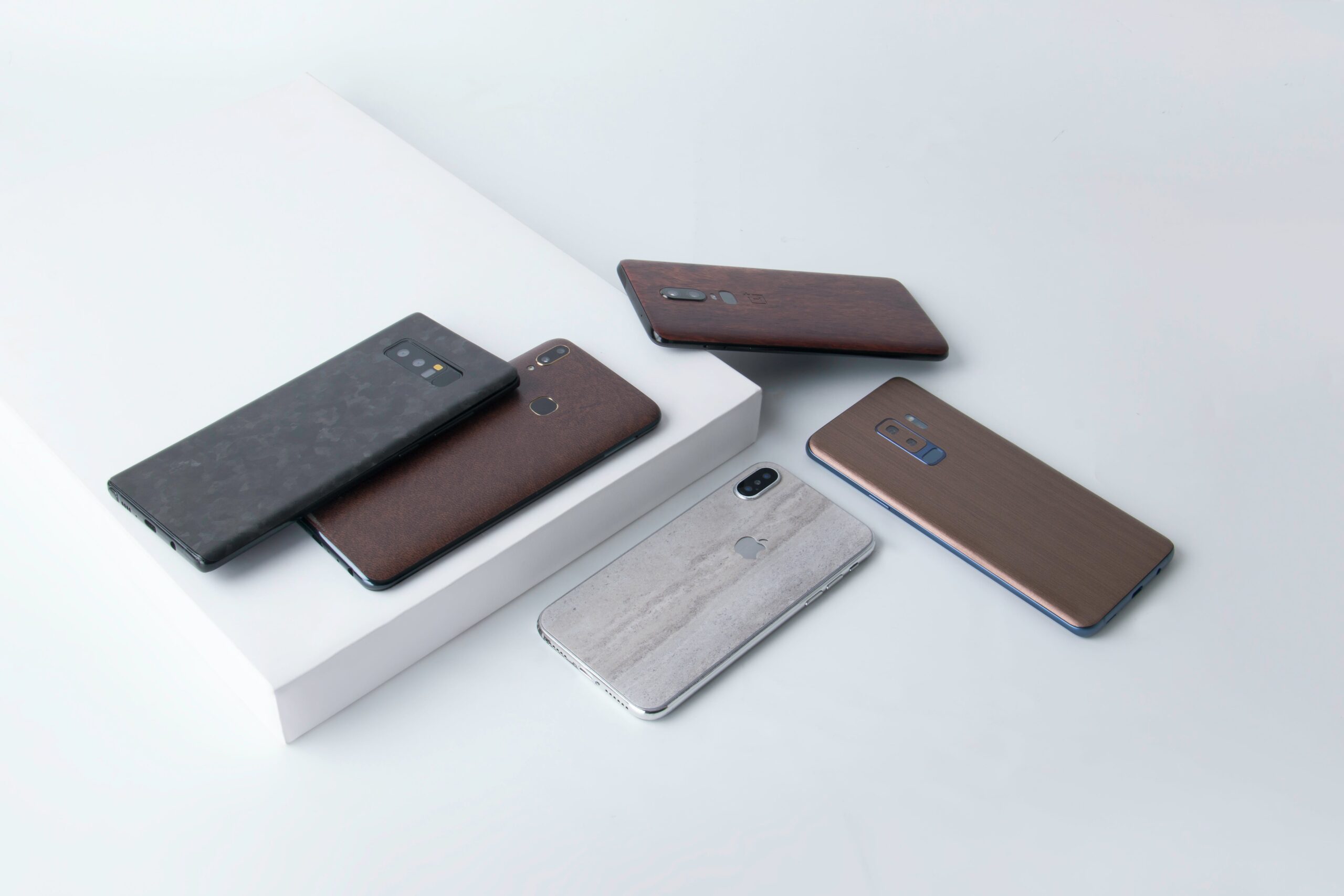How much does your phone cost you? Fifty bucks a month? Two hundred fifty dollars a month? There’s a famous saying by Henry David Thoreau that says, “The price of something is the amount of life you exchange for it.” Measured that way, what is the price of our phones? I think for most of us, the costs go far beyond the monthly bill from our cell phone provider.
Increased cell phone usage has impacted our lives in the last several decades in a multitude of ways. Perhaps many of them have been negative, but there are real positives as well to some of the points I would like to look at. Let’s talk about some of the noteworthy features of the Digital Revolution in general and about mobile phones in particular.
Mediated Communication
Let’s first of all think of the different types of communication. Face-to-face communication is one person talking to another. This is in contrast to mediated communication which is any communication carried out by the use of information communication technology. This would include both books and writing where our thoughts are carried on paper as well as speaking on a phone which carries our voice to another person. We could also narrow mediated communication down further to computer-mediated communication which is defined as any human communication that occurs through the use of two or more electronic devices. This is of course the area which has seen exponential growth for the last several decades. 1
Face-to- face communication is the gold standard of communication, but it has real limitations since we can only be in one place at one time. Mediated communication allows us to overcome those limitations and speak to people far away whether in distance or time. In the case of writing, an author can communicate ideas to many people that they will never personally speak to and of course, it can continue long after their death. In the case of computer-mediated communication, people can easily communicate with others far away, whether by voice while speaking on the phone or by text messages, social media channels, and a variety of other means. Mediated communication is also different in that it requires a certain level of expertise to operate the mediating technology whether that is using a pen to write a letter, knowing how to dial a number on a phone, or possessing the skill to type an email using a computer keyboard.
But any kind of mediated communication “engages fewer senses, transmits fewer symbolic cues such as facial expressions, and is seen as more private.” (Wikipedia, 2022) What this means is that anything we experience for ourselves without any mediating intervention has deeper neurological meaning for us than anything we experience through mediated means. A good example of this is the difference between watching a video featuring people playing softball versus playing ball yourself. Although today’s technology allows you to hear and see almost everything that is going on in the game as you watch the video, your brain is not engaged at nearly the same level that it would be if you were actually playing the game.
This can be seen most clearly with the digital communication channels of the last several decades such as text messaging and social media posting, especially as we rely on them more and more for our everyday communication. Reading books, although not face-to-face communication of course, still demands and encourages deep thought about a limited subject written down thoughtfully by the writer. Even talking on the telephone allows you to hear the inflections in the other person’s voice as you communicate. Both of these channels are much more neurologically meaningful than cryptic text messages, handy as they can be for communicating quickly about simple subjects.
Our smartphones of today are truly multi-faceted communication devices. They are wonderful blessings to be sure if they are used rightly. They allow us to keep in touch with our friends and family far away – in more ways than people using a rotary telephone 50 years ago could have ever imagined! And being able to access the gigantic amount of useful information available through them can be a tremendous advantage.
But all of this easy accessibility of messaging capability and information means that mediated communication has gained an enormous amount of ground at the expense of the gold standard, face-to-face communication. What are the impacts on our relationships? And since it is especially true that computer-mediated communication brings fewer senses into play and has less neurological significance, we are probably losing the ability to communicate deeply face-to-face if we engage only in the shallows. As they feel more and more uncomfortable relating face-to-face, people will only retreat to their phones more and more. This can already be seen in society around us.
How much life are we giving up if we are constantly on our phones? Communicating deeply with others is an integral part of being made in God’s image and should be developed and maintained. We cannot allow this ability to be lost!
What are the results of heavy mediation for learning, another huge field of communication? A quote by child psychologist Jane Healy in Your Child’s Growing Mind answers that question bluntly: “Real intelligence comes from real experiences and real people.” (Jane M. Healy, 1994) We can learn many things online, but we should remember that everything that we experience secondhand is of lesser value than whatever we experience for ourselves.
Another quote from Your Child’s Growing Mind that encourages all of us to learn by experiencing life firsthand says the following: “Learning that arises from personal experience helps brains at any age receive, associate, organize, and comprehend at appropriate neural levels.” (Jane M. Healy, 1994) Perhaps one of the greatest blessings of a book is the easily dismissed fact that you actually touch a book as you read it. Just that simple fact engages a whole extra field of senses and gives books greater value in this regard than writing on a screen. (Again, though, it must be said that digital text has some real advantages in certain contexts. One important one for the kingdom of God has been the ability to smuggle whole Bibles into restricted countries on memory cards and flash drives. Souls have been saved because of this.)
Disassociation and disinhibition are two more dangers that accompany mediated, and especially computer-mediated, communication. They, along with the sheer amount of information being sent over the internet, allows for cyber-bullying (online harassment, often done anonymously) and phishing (fraudulent emails that direct people to websites where their financial information can be stolen). These activities are common because many people are far freer to say and do things online than they would be in real life. An online presence feels disassociated from the true person of both the perpetrator and the victim or victims.
So what is the first cost of our phones, if we allow it anyway? A huge cut in face-to-face communication and a correspondingly large rise in neurologically shallow, mediated communication.
Phone + Time =Staggering Statistics
Another real cost is sheer time. Here the statistics are simply staggering. According to CommonSense Media, teenagers in 2019 spent an astounding 9 hours/day engaged with digital technology. (Edwards, 2022) The neurological effects of this on developing minds are past calculation.
Another statistic says that in 2021, the average person spent 145 minutes per day on social media alone. This represented a 61% jump from 2012, close to an hour a day more spent on social media by the average person. (Statista.com, 2022) This is a huge loss in the time that people used to devote to normal, useful pursuits like mowing their yards, reading books, or spending face-to-face time with friends and family members.
Concentration and Deep Thought Declines
Concentration and deep thought are two more things that our phones are costing us. Just the presence of a phone can reduce a person’s ability to focus. A study involving undergraduates asked the students to either leave their phones in another room while taking a cognitive test or simply silence them. Those who left their phones in another room did better as a whole than those whose phones were simply silenced. (Ehmke, n.d.) This distraction is happening at an unconscious level. The scary thing is that we are all potentially experiencing it most of the time since, for most of us, our phones are always with us.
“Having multiple sources of technology at your fingertips and available at all time probably is almost a guarantee of a reduction in performance and productivity,” says Dr. Matt Cruger, PhD, director of the Learning and Development Center at the Child Mind Institute. (Ehmke, n.d.) He is among the neuropsychologists who doubt that the multitasking that phones encourage is helping us truly increase productivity.
People usually check in on their phones every 15 minutes or less and every time that they do, it will take them 20 minutes to return to their previous task. (Paul, 2017) When you come back to your work, you will have to reactivate all the neural circuits you were using before. This simply takes time, and reinforces the need for us to take defined stretches of time free from our phones if we truly want to concentrate on a task in a sustained way.
Another interesting point is that it is the presence or sight of the phone itself that seems to trigger this cognitive decline rather than any specific app or action performed on the phone. (Zickl, 2019) This is truly astounding.
Conclusion
So what are the answers as we relate to the amount of life that our phones would like to steal from us? The abilities to communicate meaningfully face-to-face, use our time productively, and concentrate deeply are integral skills for living for the glory of God, and none of us want to lose them.
Our lives have eternal value and most of us would say that we recognize that. Why then do we sometimes trade that which we care about most – our lives, our essence as image bearers of God – for the “mess of pottage” that a carelessly used phone represents?
To paraphrase Jim Elliott, we exchange “that which we cannot lose for that which we cannot keep.”
In short, we are terrible bargainers.
We exchange our life for our phone.
May God help us not to do it.
Digital Dayz is a community committed to finding answers to the problems that constant exposure to digital technology presents.
We believe technology used rightly is great, and we are committed to finding a higher digital path for everyone who is tired of simply going with the flow and being changed by their smartphone.
Join us on this journey by checking out Digital Dayz today!
Bibliography:
Edwards, M. F. (2022). Teens spend astounding nine hours a day in front of screens: Researchers. Retrieved from West Virgina Education Association: https://www.wvea.org/content/teens-spend-astounding-nine-hours-day-front-screens-researchers
Ehmke, R. (n.d.). How Phones Ruin Concentration. Retrieved from Child Mind Institute: childmind.org/article/kids-shouldnt-use-phones-during-homework/
Jane M. Healy, P. (1994). Your Child’s Growing Mind. Main Street Books.
Paul, K. (2017, July 31). This is how long it takes to get regain your concentration after texting on your iPhone . Retrieved from Market Watch: www.marketwatch.com/story/how-your-smartphone-could-be-ruining-your-career-2017-03-31
Statista.com. (2022). Daily time spent on social networking by internet users worldwide from 2012 to 2022 . Retrieved from Statista.com: www.statista.com/statistics/433871/daily-social-media-usage-worldwide/
Wikipedia. (2022, Feb. 20). Mediated Communication. Retrieved from wikipedia.org: https://en.wikipedia.org/wiki/Mediated_communication
Zickl, D. (2019, November 13). Need to Focus? Scrolling Through Your Phone Could Tank Your Concentration. Retrieved from Bicycling.com: www.bicycling.com/news/a28761400/phone-use-cognitive-function-study/
1 Applications like Zoom and FaceTime blur the lines between mediated and face-to-face communication. Since they call themselves video-conferencing/chat software, I suppose they would be classified as mediated communication, albeit ones that transmit a video of both the speaker and the listener(s). They do include many features of face-to-face communication, but could hardly be truly called that.




